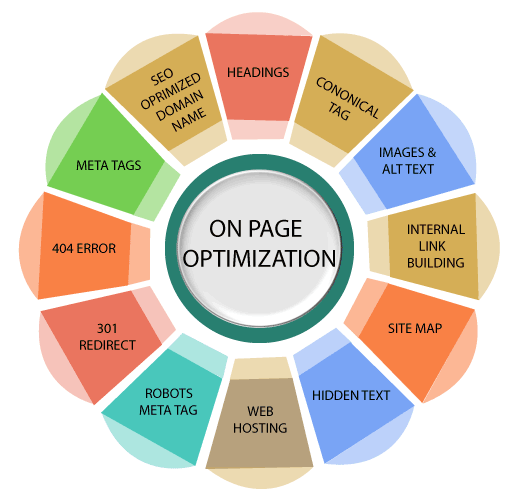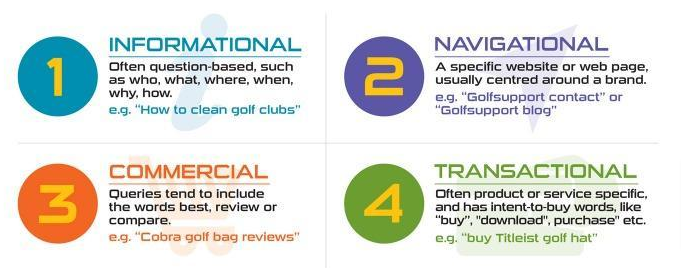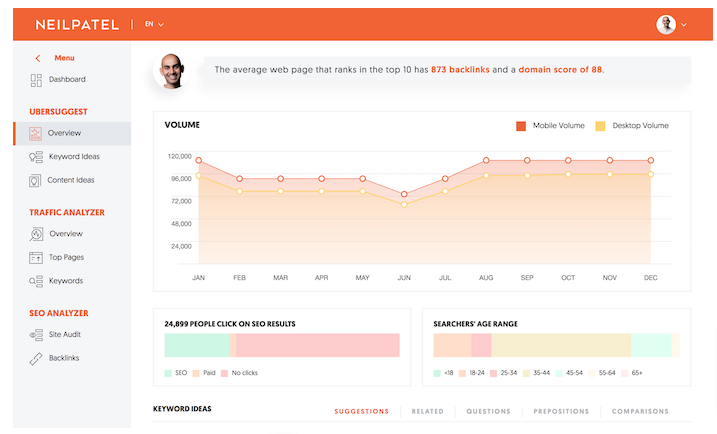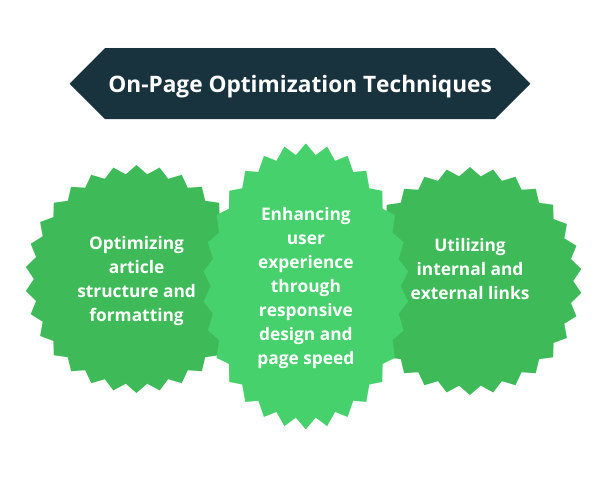Amid the fierce digital competition and fleeting attention spans, one of these approaches that is sure to capture your audience’s interests and lead to ROI is the strategic use of keywords.
But it’s not just about stuffing articles with a barrage of keywords; it’s about artfully transforming these search terms into captivating and engaging topics.
In this article, we embark on a journey to demystify the process of SEO content optimization by finding and turning keywords into compelling article topics that are easy to resonate with.
- What are Keywords?
- Conducting Keyword Research
- Turning Keywords into Article Topics
- How to do SEO Content Optimization
- Creating Engaging and Valuable Content
- Understanding User Intent and Creating Content to Meet Their Needs
- Writing High-quality and Well-researched Articles
- Incorporating Multimedia Elements to Enhance Engagement
- Optimizing Article Structure and Formatting
- Utilizing Internal and External Links
- Enhancing User Experience Through Responsive Design and Page Speed
- Tracking and Analyzing SEO Performance
- Staying Updated with SEO Trends
- Conclusion: Recap of SEO Content Optimization Principles
What are Keywords?
Keywords in SEO content optimization are specific words or phrases that reflect the main topics and themes of a web page or online content.
These strategically chosen words play a crucial role in helping search engines understand the content’s relevance and match it with user search queries.
The primary objective of using keywords is to improve a page’s visibility and ranking in search engine results pages (SERPs), driving organic traffic to the website.
To identify keywords that are going to convert, keyword research is a fundamental step in SEO content optimization.
It involves analyzing user search behavior, identifying relevant and high-traffic keywords, and understanding the competition for those keywords.
Once identified, these keywords are strategically integrated into the content, including headings, subheadings, body text, meta tags, and URLs.
However, practical keyword usage in SEO goes beyond stuffing content with target terms. Modern search engines prioritize user intent and semantic understanding.
Thus, content must be created with high-quality, relevant, and engaging information that addresses users’ needs and queries.
Keyword variations and related terms are also essential for natural language processing and improving content context.
Types of Keywords
Understanding the different types of keywords is crucial for effective SEO strategies, as each type serves a specific purpose in driving organic traffic and improving a website’s visibility.
Here, we will explore three essential types of keywords: short-tail, long-tail, and Latent Semantic Indexing (LSI) keywords.
1. Short-Tail Keywords:
Short-tail keywords, also known as broad keywords, are brief and general keyword phrases composed of one to three words.
They are highly competitive and receive a significant amount of search traffic. These keywords usually have a broad meaning and may not always directly relate to a specific topic.
While short-tail keywords have the potential to attract a large audience, they also pose challenges for SEO content optimization due to their high competition.
Ranking for short-tail keywords requires substantial authority and relevance to the topic, making it more difficult for smaller websites to achieve top positions in search results.
2. Long-Tail Keywords:
Long-tail keywords are more specific and comprise longer phrases, typically containing three or more words.
They target a narrower and more focused audience, enabling better chances of conversion and attracting users who are closer to making a purchase decision.
Unlike short-tail keywords, long-tail keywords face less competition, making it easier for websites with less authority to rank higher in search results.
A study by HubSpot revealed that longer content tends to perform better in search engine rankings, indicating a blog post should be about 2,100 to 2,400 words long for SEO.
Including long-tail keywords in SEO content optimization helps businesses capture niche audiences and improves the overall relevancy of the content.
Examples of long-tail keywords are “best running shoes for flat feet” or “affordable digital marketing services for small businesses.”
3. Latent Semantic Indexing (LSI) Keywords:
LSI keywords, also known as related keywords, are phrases closely associated with the main topic or primary keyword.
Search engines use LSI keywords to understand the context and relevance of a piece of content, helping them provide more accurate search results.
LSI keywords are crucial for avoiding keyword stuffing and ensuring content is comprehensive and valuable.
Integrating LSI keywords into SEO content optimization improves the content’s semantic relevance and helps search engines recognize the content’s overall theme.
For instance, if the main keyword is “apple,” related LSI keywords might include “fruit,” “iPhone,” “orchard,” “technology,” and “Steve Jobs.”
Importance of Keyword Research
Among the various aspects of SEO, keyword research stands out as a fundamental and indispensable element of content optimization.
It involves identifying and analyzing the search terms and phrases that users employ when searching for specific information, products, or services.
Here are vital points highlighting keyword research’s importance in SEO content optimization.
1. Enhanced Relevance and Targeting:
Keyword research allows content creators to gain valuable insights into the language and vocabulary used by their target audience.
By incorporating these relevant keywords into the content, websites can improve their chances of being in search engine results when users search for information related to their offerings.
This enhanced relevance and targeting ensure that the right audience finds the content, leading to increased traffic and potential conversions.
2. Competitor Analysis and Opportunity Identification:
Keyword research not only aids in understanding the audience but also offers a glimpse into the competitive landscape.
By analyzing the keywords that competitors are targeting, businesses can identify opportunities and gaps in their own content strategy.
They can capitalize on less competitive or untapped keywords to carve a niche and gain a competitive advantage.
3. Long-Term SEO Strategy:
Effective keyword research done at the present can serve as the foundation for a long-term SEO strategy.
By continuously monitoring and updating keywords based on industry trends and audience behavior, businesses can maintain their relevance and adapt to changing market demands.
This iterative process ensures that the content remains aligned with what users seek, ultimately improving search rankings and driving sustainable organic traffic.
4. Creating Valuable Content:
Keyword research is not solely about stuffing content with relevant terms. It goes hand in hand with creating valuable and informative content.
According to a study by Search Engine Journal, understanding user intent can increase organic traffic and engagement with your content.
Valuable content attracts more visitors, encourages longer sessions on the website, and reduces bounce rates – all of which are positive signals for search engines
5. On-Page SEO Optimization:

Keywords research is an essential component of on-page SEO optimization for your website..
By including targeted keywords in titles, headings, and content, websites can signal their relevance to search engines and improve their chances of ranking higher in search results.
However, it is essential to strike a balance and avoid over-optimization, as search engines may penalize websites for keyword stuffing.
6. Understanding Search Intent:
Keyword research helps decipher the intent behind user searches. It categorizes keywords into informational, navigational, and transactional intent.

This understanding and insights enables businesses to align their content with user expectations effectively.
For instance, if users are seeking information, a blog post or guide may be more appropriate, while transactional queries may require product pages or landing pages for conversion.
7. Mobile and Voice Search Optimization:
As mobile and voice search continue to rise in popularity, keyword research becomes even more critical.
Mobile users often employ shorter and more conversational queries, while voice search tends to be more question-based.
By optimizing content for mobile and voice search queries, businesses can tap into these growing segments of the search market and attract a broader audience.
Conducting Keyword Research
Tools for Keyword Research
Keyword research tools have become essential for marketers and SEO professionals to identify relevant keywords, discover new opportunities, and stay ahead in the competitive digital realm.
Here are essential tools for keyword research and how they empower businesses to create impactful SEO content strategies.
1. Google Keyword Planner
Google Keyword Planner is hands down one of the best tools out there for keyword research. This free tool is a goldmine for finding relevant keywords perfect for your niche.
It not only gives you insights into their search volumes but also helps you come up with fresh keyword ideas you might not have thought of before.
One of the most valuable aspects of Google Keyword Planner is that it shows you the level of competition for each keyword.
This lets you understand how tough it would be to rank for specific terms, which is helpful in planning your SEO strategy.
Its user-friendly interface makes it a breeze to navigate through and extract meaningful data directly from Google’s massive database.
2. SEMrush
SEMrush is a comprehensive SEO and digital marketing tool that offers powerful keyword research capabilities.
It allows you to conduct in-depth keyword research by providing data on search volume, keyword difficulty, and competitive analysis.

Furthermore, it allows you to analyze your competitors’ keywords, which can give you insights into their content strategy and help you identify new opportunities for your own website.
SEMrush also offers features like organic and paid keyword research, keyword trends, and related keyword suggestions.
3. Ahrefs
Ahrefs is another popular all-in-one SEO tool that includes robust keyword research functionality.
Its keyword explorer tool provides detailed information on search volume, keyword difficulty, and the number of clicks searchers make after typing a particular keyword.

It also offers features like keyword ideas, content gap analysis, and competitor research that would prove valuable to an SEO marketer when trying to choose keywords.
With Ahrefs, you can discover long-tail keywords that are less competitive but highly relevant to your content, which can help you target specific niche audiences effectively.
4. Moz Keyword Explorer
Moz Keyword Explorer is designed to assist in finding high-quality keywords for content optimization. It provides data on search volume and organic click-through rates for keywords.
The tool also offers valuable metrics like “Opportunity Score,” which helps you prioritize the most impactful keywords.
Additionally, Moz’s keyword tool can identify and group keyword suggestions based on their semantic similarity, which aids in creating content that covers various related terms.
5. Ubersuggest

Ubersuggest is a simple and user-friendly keyword research tool that provides valuable insights for content optimization.
It offers data on search volume, keyword difficulty, and CPC (Cost Per Click) for each keyword.
It also provides keyword suggestions, related searches, and content ideas, which can inspire new topics and improve your content strategy.
Additionally, the tool has a domain analysis feature that helps you evaluate your competitors’ top-performing pages and keywords.
6. Google Trends
While not a traditional keyword research tool, Google Trends is essential for understanding the popularity of specific keywords over time.
It shows the search volume trend for a keyword and allows you to compare multiple keywords to see which ones are currently trending.
Google Trends can be helpful in identifying seasonal trends, news-related topics, and rising interests, helping you create timely and relevant content to capture popular searches.
Identifying Relevant Keywords for Your Niche
One of the fundamental pillars of SEO content optimization is the identification and utilization of relevant keywords.
By incorporating these keywords into website content, businesses can increase their chances of ranking higher in search engine results and reaching their target audience effectively.
Below, we will delve into the key ways of identifying relevant keywords for your niche in SEO content optimization.
1. Understand Your Niche:
The first step in identifying relevant keywords is to gain a deep understanding of your niche and target audience.
Research your industry, products, or services to determine the primary topics and themes. Understand the pain points, needs, and desires of your potential customers.
This insight will guide you in selecting keywords that resonate with your audience, leading to increased engagement and conversions.
2. Conduct Keyword Research:
Keyword research is the foundation of effective SEO content optimization. Consider using tools like Google Keyword Planner or Ahrefs to do your keyword research.
These tools provide valuable insights into keyword search volume, competition, and related keywords.
You should aim for a mix of high-volume and long-tail keywords so as to balance between visibility and targeted traffic.
3. Focus on Long-Tail Keywords:
Long-tail keywords are longer and more specific phrases that usually have lower search volume but higher intent.
According to a study by Ahrefs, long-tail keywords tend to have lower search volumes but higher conversion rates, making them valuable targets for content optimization.
Long-tail keywords also have lower competition, making it easier for your content to rank higher in search results.
4. Analyze Competitor Keywords:
Competitor analysis can provide valuable insights into which keywords your competitors are targeting.
Identify your top competitors and analyze their websites and content. Tools like SEMrush and Ahrefs can help you discover the keywords that are driving traffic to their sites.
You can use this information to identify gaps in your keyword strategy and find new keyword opportunities to target.
5. Leverage Google Autocomplete and Related Searches:
When you type a query into Google’s search bar, it provides autocomplete suggestions based on popular searches related to your initial question.
Additionally, at the bottom of the search results page, Google displays related searches. These suggestions are a goldmine of relevant keywords.
Incorporate these keywords into your content to capture the attention of users actively searching for information related to your niche.
6. Use Semantic SEO:
Search engines are becoming increasingly sophisticated and can understand the context and meaning behind words.
Rather than focusing solely on exact match keywords, use semantic SEO to include related terms, synonyms, and variations within your content.
This approach helps search engines comprehend the overall relevance of your content and improves its chances of ranking for various related search queries.
7. Monitor and Adapt:
SEO is not a one-time effort but an ongoing process. Monitor the performance of your keywords using tools like Google Analytics and Search Console.
Track changes in keyword rankings and adapt your strategy based on performance data.
Regularly update your content to include new keywords and ensure that your website remains relevant in the eyes of search engines.
Analyzing Keyword Competition and Search Volume
To achieve success in SEO content optimization, understanding keyword competition and search volume is essential.
These insights help you identify keywords with the right balance of competitiveness and potential traffic.
Here are comprehensive ways to analyze keyword competition and search volume.
1. Keyword Research:
Keyword research is the initial step in identifying relevant and high-performing keywords for your content.
Several tools like Google Keyword Planner, SEMrush, Ahrefs, and Moz Keyword Explorer can help you discover potential keywords.
When conducting keyword research, focus on long-tail keywords – more specific phrases that may have lower search volumes but higher intent and conversion rates.
These long-tail keywords are often less competitive and can drive targeted traffic to your website.
2. Search Volume Analysis:
Search volume refers to the number of searches a keyword receives within a specific timeframe.
Analyzing search volume gives an indication of the keyword’s popularity and the potential traffic it can bring to your content.
Tools like Google Keyword Planner provide historical search volume data for keywords, helping you identify seasonal trends and fluctuations.
While high search volume keywords might seem attractive, they also tend to be more competitive, making it challenging to rank well.
Balancing search volume and competition is crucial for SEO content optimization.
3. Competitor Analysis:
Analyzing your competitors and their operations is a valuable strategy for understanding keyword competition.
Identify the keywords they are targeting and ranking for, as well as the quality of their content and backlink profiles.
Tools like Ahrefs and SEMrush allow you to conduct competitor analysis, providing insights into their organic rankings, top-performing pages, and backlinks.
By evaluating their strengths and weaknesses, you can fine-tune your content strategy and target keywords that your competitors might have overlooked.
4. Keyword Difficulty Assessment:
Keyword difficulty assessment refers to a measurement used to identify how hard it is to rank for a particular keyword.
Several factors contribute to keyword difficulty, including the number of competitors targeting the keyword and the level of on-page and off-page optimization.
Tools like Moz, Ahrefs, and SEMrush offer keyword difficulty scores, indicating the relative competition for a keyword.
Balancing keyword difficulty with search volume can help you choose the right keywords to optimize your content.
5. Long-Term and Short-Term Strategies:
SEO content optimization requires a mix of long-term and short-term strategies.
Long-term strategies focus on high-competition, high-search-volume keywords that might take longer to rank but can bring substantial traffic once achieved.
Short-term strategies concentrate on low-competition, low-search-volume keywords that can provide quick wins and contribute to your overall organic traffic.
Striking the right balance between these strategies ensures steady growth in organic visibility.
6. Localized Keyword Analysis:
If your business caters to a specific location, consider incorporating localized keywords in your content optimization.
Local SEO is crucial for businesses with physical locations or those targeting a specific geographical area.
Use tools like Google My Business and local keyword research tools to discover location-based keywords with manageable competition and decent search volume.
7. Content Relevance and User Intent:
While analyzing keyword competition and search volume, do not overlook the importance of content relevance and user intent.
Ensure your content aligns with the keyword’s intent and provides valuable information to the users.
Google’s algorithms are increasingly focused on understanding user intent and delivering the most relevant results, so creating high-quality content is paramount for SEO success.
Turning Keywords into Article Topics
By effectively utilizing targeted keywords, you can craft articles that not only rank well in search engines but also captivate your audience.
In this collection, we explore essential ways to turn keywords into engaging article topics, ensuring your content resonates with both search engines and your readers.
Brainstorming Article Ideas Based on Keywords
Start by generating a list of potential article ideas derived from your targeted keywords. Expand on the seed keywords by considering related long-tail keywords and LSI keywords.
Use keyword research tools and search engines’ autocomplete features to discover relevant topics.
Additionally, analyze your competitors’ content and identify gaps in their coverage to explore unique angles and fresh perspectives.
The goal is to create a diverse range of article ideas that cater to different aspects of your niche and meet various user needs.
Creating Engaging and Informative Titles
Once you have a list of article ideas, focus on crafting captivating and informative titles. A compelling title piques readers’ curiosity and entices them to click through to your content.
Incorporate your target keyword naturally into the title while ensuring it accurately represents the content’s focus.
Consider using power words, numbers, and adjectives to make titles more appealing.
Strive to strike a balance between SEO optimization and reader engagement, as an intriguing title encourages higher click-through rates and improves user experience.
Aligning Article Topics with User Intent
Understanding user intent is crucial in SEO content optimization. Analyze the intent behind each targeted keyword and ensure your article topics directly address that intent.
Ask yourself if users are seeking for information, looking to make a purchase, or seeking for solutions, then tailor your content to match user expectations while providing value.
High-quality, relevant content that satisfies user intent not only ranks higher in search results but also keeps visitors engaged and encourages them to explore more of your content.
How to do SEO Content Optimization
SEO content optimization is a crucial aspect of digital marketing, ensuring that your content is not only user-friendly but also search engine-friendly.
By strategically incorporating keywords, you can enhance your content’s visibility, attract organic traffic, and improve overall search engine rankings.
Incorporating Keywords Naturally in Content
Properly incorporating keywords into your content helps search engines understand the context of your web pages and rank them higher for relevant searches.
Backlinko analyzed 11.8 million Google search results and found that there is a correlation between keyword placement and higher rankings in search engine results.
It is, thus, crucial to use keywords naturally to maintain the quality and readability of your content.
Stuffing keywords excessively may lead to keyword spamming, which can result in penalties from search engines.
Instead, focus on integrating relevant keywords seamlessly into your content, making it informative, engaging, and easy to read.
To achieve this, perform thorough keyword research to identify your content’s most relevant and high-performing keywords.
Utilize tools like Google Keyword Planner, SEMrush, or Ahrefs to find valuable keywords with high search volumes and low competition.
Once you have a list of keywords, strategically place them in the title, introduction, subheadings, and throughout the body of your content.
Remember, the goal is to provide valuable information to your audience while making it easier for search engines to understand the content’s relevance.
Using Header Tags and Subheadings
Header tags (H1, H2, H3, etc.) and subheadings are essential elements of SEO Content Optimization.
These tags provide a hierarchical structure to your content, making it easier for users and search engines to navigate and comprehend the information on your web page.
The H1 tag should be reserved for the main title of the page and should include the primary keyword.
Subheadings (H2, H3, etc.) should be used to break down the content into logical sections, each focusing on a specific topic related to the main keyword or theme.
By doing so, you enhance the readability of your content and improve user experience.
Search engines also use header tags to understand the structure of your content and its relevance to users’ queries.
Thus, using header tags and subheadings not only aids SEO but also contributes to a more organized and user-friendly website.
Optimizing Meta Tags and URL Structure
Meta tags are snippets of HTML code that provide information about a web page’s content to search engines. The two most critical meta tags are the meta title and meta description.
The meta title appears as the main headline in search engine results and is a crucial element in determining click-through rates.
It should be concise, descriptive, and include the primary keyword. The ideal length for a meta title is around 50-60 characters to ensure it displays correctly in search engine results.
The meta description, on the other hand, is a brief summary of the content’s main points and acts as a call to action to encourage users to click on your link.
Ensure it is compelling, unique, and relevant to the page’s content. Aim for a meta description length of approximately 150-160 characters.
Additionally, you can optimize your URL structure and make it more productive by incorporating relevant keywords.
A clean and concise URL not only helps search engines understand the content but also makes it more shareable and memorable for users.
Creating Engaging and Valuable Content
Standing out and making a meaningful impact on both search engines and users requires that you have engaging and valuable content.
Key strategies need to be employed to craft content that not only ranks well but also truly resonates with your audience, forming lasting connections and driving organic traffic.
Understanding User Intent and Creating Content to Meet Their Needs
The key to effective content creation lies in understanding what your audience is really looking for.
Take a deep dive into the search queries and keywords that bring users to your website and get to understand what it is that they need.
By empathizing with your audience and offering solutions, you establish yourself as a trusted authority and keep users coming back for more.
Writing High-quality and Well-researched Articles
When it comes to content creation, quality is king. Your articles need to be not just informative but also engaging and easy to read.
That means rolling up your sleeves and conducting thorough research to ensure accuracy and reliability.
Back up your claims with credible sources and data, and structure your content logically with headings, subheadings, and bullet points to make it reader-friendly.
Clarity is essential, so avoid jargon that might confuse your audience. Remember, the more authoritative and top-notch your content is, the more favor you’ll gain with search engines.
Incorporating Multimedia Elements to Enhance Engagement
Plain old text can only do so much to captivate your audience. To truly keep them hooked, spice things up with multimedia elements like images, infographics, videos, and interactive content.
These visuals not only break up large chunks of text but also make your content more scannable and digestible.
Videos, for example, can be super engaging and can effectively convey even the most complex information.
By incorporating relevant multimedia elements, you enrich the overall content experience, encouraging users to spend more time on your website.

On-page optimization plays a pivotal role in enhancing your website’s visibility and search engine rankings.
By focusing on factors within your control, you can improve the content’s relevance, user experience, and overall search engine friendliness.
Here are three key on-page optimization techniques that will help you maximize the impact of your SEO content.
Optimizing Article Structure and Formatting
A well-structured article not only appeals to readers but also makes it easier for search engines to understand your content.
Utilize heading tags (H1, H2, H3, etc.) to create a clear hierarchy and break your content into digestible sections.
Incorporate your target keywords in headings to signal their importance. Utilize bullet points and numbered lists to present information succinctly.
Ensure your content is scannable, as users often skim through content before deciding to engage fully.
Additionally, use relevant and descriptive meta titles and meta descriptions to entice users and improve click-through rates from search engine results.
Utilizing Internal and External Links
Strategic linking is crucial for on-page optimization. Internally link to other relevant pages within your website, guiding users to explore more of your content.
This improves user engagement and helps search engines discover and index more of your pages. Use descriptive anchor texts that incorporate relevant keywords for internal links.
Externally link to reputable and authoritative sources that support your content, providing users with additional value and building trust.
Properly interlinking your content enhances its credibility and authority in the eyes of both users and search engines.
Enhancing User Experience Through Responsive Design and Page Speed
Ensure your website has a responsive design that adapts seamlessly to different screen sizes and devices, including mobile phones and tablets.
Responsive design improves accessibility and keeps users engaged across any platform that they are using.
Optimize your website’s page speed to minimize loading times, as slow-loading pages can deter users and negatively impact search rankings.
Compress images, leverage browser caching, and minimize server response time to optimize page speed.
A positive user experience results in higher dwell times and lower bounce rates, indicating to search engines that your content is valuable and relevant.
Tracking and Analyzing SEO Performance
In the dynamic world of SEO content optimization, tracking and analyzing your performance is essential for staying ahead of the competition and achieving your digital marketing goals.
By effectively measuring the impact of your efforts, you can identify what works, make data-driven decisions, and continuously improve your SEO strategy.
In this section, we explore key ways to track and analyze SEO performance for your content.
Monitoring Keyword Rankings and Organic Traffic
You need to keep a close eye on how your target keywords are performing in search engine rankings. Use tools like Ahrefs or Google Search Console to track keyword positions over time.
Assess whether your content is moving up or down in rankings and identify opportunities to optimize further. Additionally, track organic traffic trends using tools like Google Analytics.
Monitor the number of visitors coming to your site through organic search, as well as the pages that are attracting the most traffic.
By understanding which keywords and pages drive the most organic traffic, you can fine-tune your content strategy for maximum impact.
Using Analytics Tools to Measure Content Performance
Leverage analytics tools like Google Analytics to gain insights into how users interact with your content.
Analyze metrics such as bounce rate, time on page, and pages per session to gauge user engagement.
Identify which content pieces are resonating most with your audience and driving the desired actions, such as conversions or lead generation.
Look for patterns in user behavior and identify areas where your content may be falling short.
These analytics tools provide valuable data that helps you understand your audience better and optimize your content to meet their needs effectively.
Making Data-driven Optimizations based on Insights
Once you have collected and analyzed the data, use the insights to make data-driven optimizations to your content and SEO strategy.
If certain keywords are performing well, consider creating more content around similar topics to capitalize on their success.
For pages with high organic traffic but low conversions, review the content and calls to action to improve user experience and encourage conversions.
Address any technical SEO issues that may be hindering your website’s performance, such as page speed or mobile responsiveness.
Regularly A/B test different elements of your content to see what resonates best with your audience.
Staying Updated with SEO Trends
Search engine algorithms, user behavior, and SEO techniques are always evolving, making it crucial to keep up-to-date with the latest developments.
In this comprehensive compilation are key ways you can stay current with SEO trends and continuously improve your SEO content strategies.
Following Industry Experts and Resources
Keep a close eye on industry experts, renowned SEO professionals, and reputable resources in the field of SEO.
Follow their blogs, social media accounts, and podcasts to receive timely updates and insights into the latest SEO trends and techniques.
Many experts regularly share valuable tips, case studies, and analysis that can help you stay ahead of the curve.
Engage in online SEO communities and forums to interact with other professionals and learn from their experiences.
By staying connected with the SEO community, you can stay up-to-date with the rapidly changing industry landscape.
Adapting to Algorithm Updates
Search engines frequently update their algorithms to improve the quality of search results and combat spam.
Keep a vigilant eye on major search engine algorithm updates, especially those released by Google.
Updates like Google’s core algorithm updates can significantly impact search rankings and organic traffic.
Understand how algorithm changes may affect your website’s visibility and adapt your content strategies accordingly.
Focus on providing high-quality, relevant content that aligns with search engine guidelines to withstand algorithm changes and maintain a strong online presence.
Continuously Improving SEO Content Strategies
SEO content optimization is an ongoing process. Regularly analyze your website’s performance, user behavior, and SEO metrics to identify areas for improvement.
Monitor keyword rankings, organic traffic trends, and user engagement metrics. A/B tests different elements of your content to understand what resonates best with your audience.
Implement data-driven optimizations based on insights to enhance the effectiveness of your SEO content strategies.
Stay proactive and adapt your strategies to address new challenges and opportunities that arise in the digital landscape.
Conclusion: Recap of SEO Content Optimization Principles
In the fast-paced digital world, mastering the art of SEO content optimization is the key to unlocking online success.
By finding optimal keywords, content creators can bridge the gap between search engine algorithms and user intent, elevating their website’s visibility and attracting a loyal audience.
Balancing SEO best practices with creativity and value ensures that our content stands out amidst the digital noise.
In that spirit, if you are looking for a team of experts who specialize in crafting content strategies that drive results, look no further than the Flying V Group.
With many years of experience, we understand the dynamic world of SEO content optimization and digital marketing.
Our data-driven approaches and a focus on the user help us propel your website to new heights, attracting organic traffic and achieving your business goals.






0 Comments